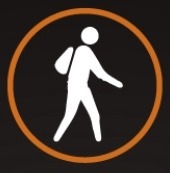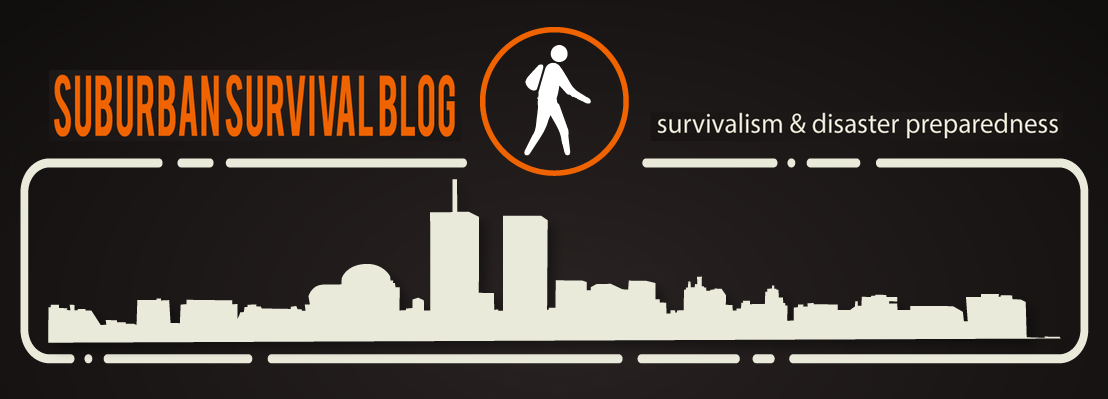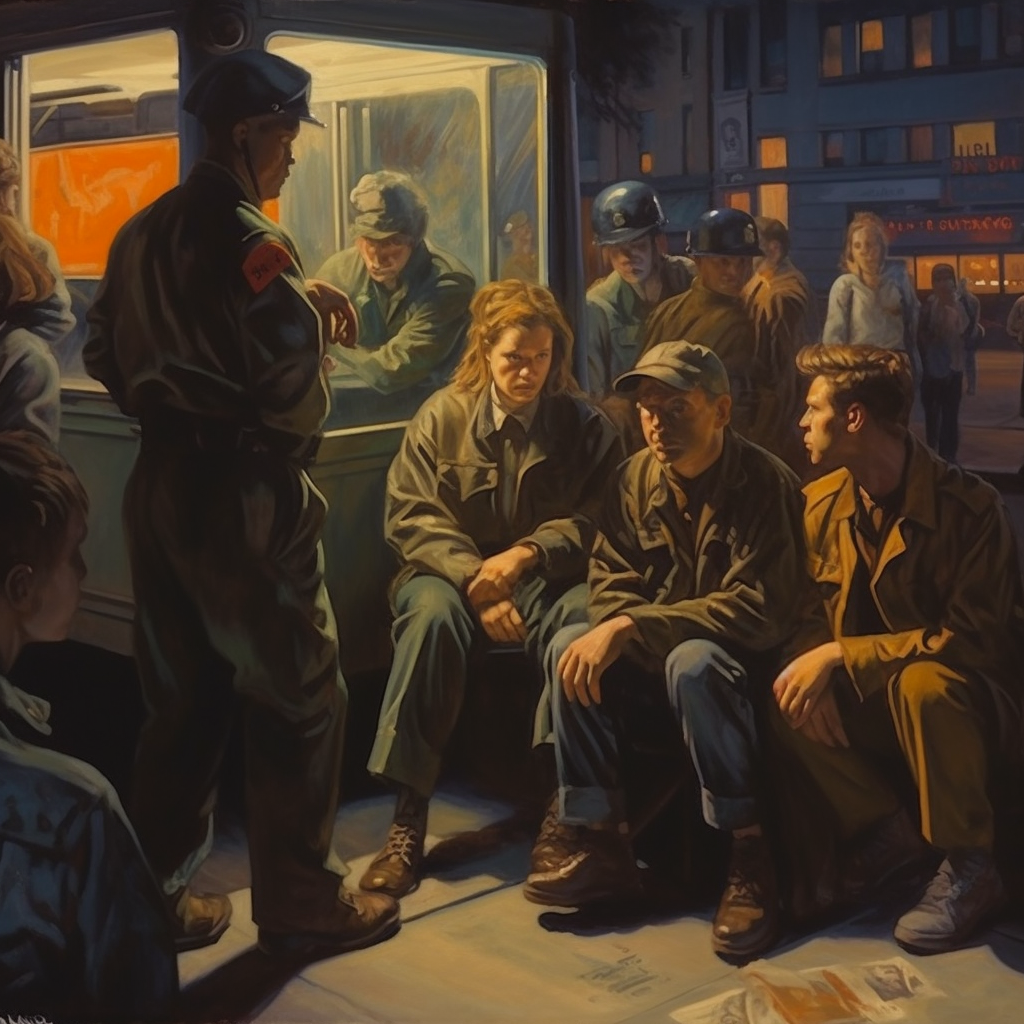The Modular Survival Kit is a fairly simple concept. And one that I know that the military is familiar with, but not one that I’ve heard get much attention in the prepping community. Once I had built up my kit, as any aspiring survivalist would do, I did a few practice bug-outs in the form of camping trips, timed drills and deployments. I had put together all of the types of packs that I had heard recommended by other preppers and survivalists. But, as I actually went to use my gear, I realized it really wasn’t organized very effectively. I had many different packs, but most of them contained roughly the same redundant gear, more or less. I also noticed that I was having to dump all my gear out on the floor to pack before trips. My trips weren’t full blown Bug Outs, most of them were more like “working vacations.” (I believe that’s how Suburban phrased it) … you know the trips … the evacuations before the hurricane hits, the family outings, camping trips, hunting, fishing and boating trips … all of the “real life” stuff that you need more than just your bug out bag for. Sure, I have a 72-hour kit or Bug Out Bag or GOOD Pack that I can grab as I run out the door, but how often have I had to run out the door with only time to grab that one bag? Most of the time, even in emergencies, there is still some sort of packing process that takes place. Even if it is as simple as opening my turnout bag, dressing for a particular activity and walking out the door, I still have to grab my wallet, my keys and my cell phone, etc.. There are also some things that it’s just not practical to have duplicates of, like your Driver’s License, Passport, Health Insurance Card, etc..
- Given a little time and space to prepare and the means to carry it, it’s nice to have more than just what you can run with on your back
- Having to sort through gear before a trip wastes time and energy
- Over-redundancy adds weight to your load and is often a waste of money
- Real-world clutter = clutter in your mind when it’s time to bug out
- It’s just not practical to have duplicates of some things
For me, a workable solution to these problems was to develop a modular system of packing my gear so that I can quickly customize my load-out for a given situation. By packing various ensembles, bags, modules or packs, you can add or subtract mission-oriented modules to quickly customize your load-out while minimizing over-redundancy. Yes, redundancy of key equipment is good as in, “Two is one, one is none.” But over decades of prepping and refining your gear, most of us inevitably amass multiples of many items. Don’t get me wrong, that can be an asset, set them aside for family or barter or charity or redundancy in the form of supply caches. But I’ve seen many a bugout bag with half a dozen or more knives, each 2‑inches longer than the last. There is a limit to what you can carry on your back, in a handcart, in your vehicle, or even on a trailer. Carry what you actually need, keep it sharp, train with it often and set the rest aside. Once you’ve got your gear sorted into it’s modular components, keep a checklist for each type of trip you make so you don’t forget anything that you have removed from one pack to add to another for another trip. This will also help you remember to put it back were it belongs when you are done with it. Lastly, keep a short trip journal and take notes on each trip: when, where, the weather, what worked great, what didn’t work, what you wish you had but didn’t, and what was just extra dead weight and could be trimmed. This will help you customize your kit down the road.
A modular survival kit:
- Allows you to quickly adapt your load to maximize you chances of survival
- Lets you trim weight by cutting loose anything you are not going to need
- Eliminates the need to rummage through every piece of kit you own before each trip
- Checklists help keep you from forgetting gear, from not putting it back were it belongs and helps mitigate the need for duplicates of things that are not easily duplicated
- Keep a trip journal to help you refine your gear over time in light new information or better consideration
Below, I’ll make a partial list of modules that works for me. I am a volunteer first responder so my equipment reflects that. What works for you might be different. Most of you probably already have an Every Day Carry Kit, a Bug-out Bag or 72-hour Kit and a Get Home Bag for the vehicle in addition to a Bug-In Gear or Home Storage. They can still be your framework, just reconfigure them so that they are in line with the principles of the Modular Survival Kit and break gear out into the other modules as needed. I won’t go into Home Storage here since it’s outside the scope of the Modular Survival Kit.
- Turnout bag — Most first responders use some sort of a turnout bag. It contains boots, socks, clothing — everything necessary to get dressed and ready to go in one place. This saves time and confusion preparing to deploy during an adrenaline surge. Customize this bag to whatever you do. Think of this as your first responder gear. I also use a checklist so I don’t forget any of those hard-to-duplicate items that I mentioned earlier. I like the turnout bags from 5.11.
- Every Day Carry — I keep an EDC checklist in my pocket agenda so I don’t forget any critical gear — in particular, expensive items that are sometimes used as components of other packs. I want to use my first line equipment whether I’m bugging out, going camping or being deployed. I try to buy and wear practical clothing designed for every day concealed carry. I like brands like 5.11, Woolrich, Eotac, Blackhawk, Under Armor because they have all kinds of specialized pockets for hideout cuff keys, spare mags, flashlights and so forth. I like to keep this together in a dresser/closet.
- 72-hour kit, Bugout Bag or Get-out of Dodge Pack — This is the bag that you can grab and run out the door with should the need arise. I pack mine in a MOLLE combat patrol pack and waist pack so it can be buckled onto my existence load if I am able to carry the additional weight because I have a handcart or a vehicle or because I don’t need to move as fast.
- Existence Load — This larger pack has a week worth of food, shelter, water, first aid, self defense tools and ammunition. Think backpacking trip: Modular Sleep System, additional clothing, shelter, sleeping pad, repair kit, backpacking stove, backpacking lantern, batteries etc.. I use a CFP-90 so I can attach ALICE or MOLLE gear and smaller packs like the medic pack or combat patrol pack can quickly buckle onto it via fastex buckles.
- Concealed Carry/Self-Defense Go-Bag — This bag is so you won’t be fumbling in the dark while experiencing an adrenaline surge during a home invasion. I like to have a couple of less-lethal options in this bag because I want to have options available to me all along the Use-of-Force Continuum, as opposed to only lethal force options. Being a self-defense practitioner that only has lethal force options available is kind of like being a doctor that can only perform surgery. I use a 5.11 Select Carry pack with waist pack for this one with a folded body armor panel stuffed in the hydration pouch pocket to protect my vitals.
- Cold Weather Clothing Ensemble — Layers of cold weather clothing in waterproof pack liners.
- NBC Ensemble — Nuclear/Biological/Chemical personal protective equipment and monitoring equipment. I keep this in a US Military Surplus ALICE NBC Ensemble Bag and a rough tote or action packer.
- Deployment Bag/Shelter Bag — This is a bag in case I’m deployed to a disaster area and have to work out of a shelter or in case I choose to use a shelter for some reason. I use a Mission Ready rolling duffle by 5.11 for this.
- CERT Pack — Community Emergency Response Team pack with first responder gear. I use a purpose built pack system with CERT ID patches for this. It’s a combination Waist Pack/Backpack that I bought from Propac.
- CERT Command POD — This is a Point of Distribution to set up an Emergency Operations Center and set up a command structure for my CERT. This is also packed in a 5.11 Mission Response Wheeled Duffle.
- ARES Go Bag — HAM radio equipment in case I am deployed with the Amateur Radio Emergency Service. I use a 5.11 bag that buckles onto other bags and a Duracell Power Pack.
- FRS/GMRS Go Bag — FRS/GMRS radio equipment & batteries for 8 people. 5.11 bag that buckles to other bags.
- EMT Trauma Kit — First aid, trauma kit with smaller pull-out first aid kit.
- Medical Treatment POD/Medical Supplies Bags — POD to set up Triage and Medical Treatment Areas. Military surplus medical bags full of medical supplies.
- Fighting Load — MOLLE Load bearing equipment, hydration pack, body armor. A combination of new and military surplus equipment in a duffle.
- Various Weapon Modules: Everything from wrist rockets to sniper rifles. Each weapon needs ammo, pouches, cleaning jigs, etc. I store them in labelled gun cases and labelled ammo cans so I can find them in a hurry without opening each case or can.
- Hunting Duffle — Specialized hunting gear and clothing so I don’t look like a mercenary when I go hunting.
- Fishing Bag — Collapsible spinning rod & reel, tackle, line, stringer, fillet knife, etc..
- Dry Bag — Waterproof Sealine Bag Dry Bag Backpack for boating, rafting, and canyoneering recreational activities.
- Car Camping Duffles — Duffles of camping equipment for family reunions, cookouts, camping trips.
- Subsistence Modules — Bags and Rough Totes full of freeze dried backpacking meals, MREs, fuel to cook them, drink mixes, TP, matches, multi-purpose soap, sun block, bug juice, water purification tables or dropper bottles of bleach or 2% iodine tincture, and and US GI water cans. I prefer Mountain House for the backpacking meals. With these modules, I can extend my stay by simply adding subsistence modules of a day, week or month.
- Camp Furniture — Tents, Camp Furniture, Sun Shade etc.. I store these bulky items separately.
- Get Home Bag — 5.11 Covert Carry Pack that blends into an Urban setting. Contains what I need to get home if stranded while driving.
- Automotive Repair Kit — Gear to get me back on the road, signal other vehicles, shelter me from exposure.
- Range Bag — Everything that I take to training. I don’t know who made my range bag, but it works for me.
Now that sounds like a lot of gear, and it is, but at the end of the day, it’s organized and I can quickly load my truck or car without dumping everything I own on the floor every time I go somewhere or need something. In truth, it’s not even a complete list, but that wouldn’t be practical for the blog. If you can’t quickly locate your gear, it might as well be stored on the moon because you will not be able to get at it in a timely fashion when you need it. Worst yet, you could waste precious time trying to find it, creating additional vulnerability.
———–
Please don’t forget about our Book Giveaway which can be found here.









@Mr-Jones I have been meaning to rebuild my BoB, and to start making it more modular, especially since I do a LOT of camping and some of the gear overlaps. I hate to keep them separated or have to purchase redundant gear just to have it go unused 90% — 100% of the time…